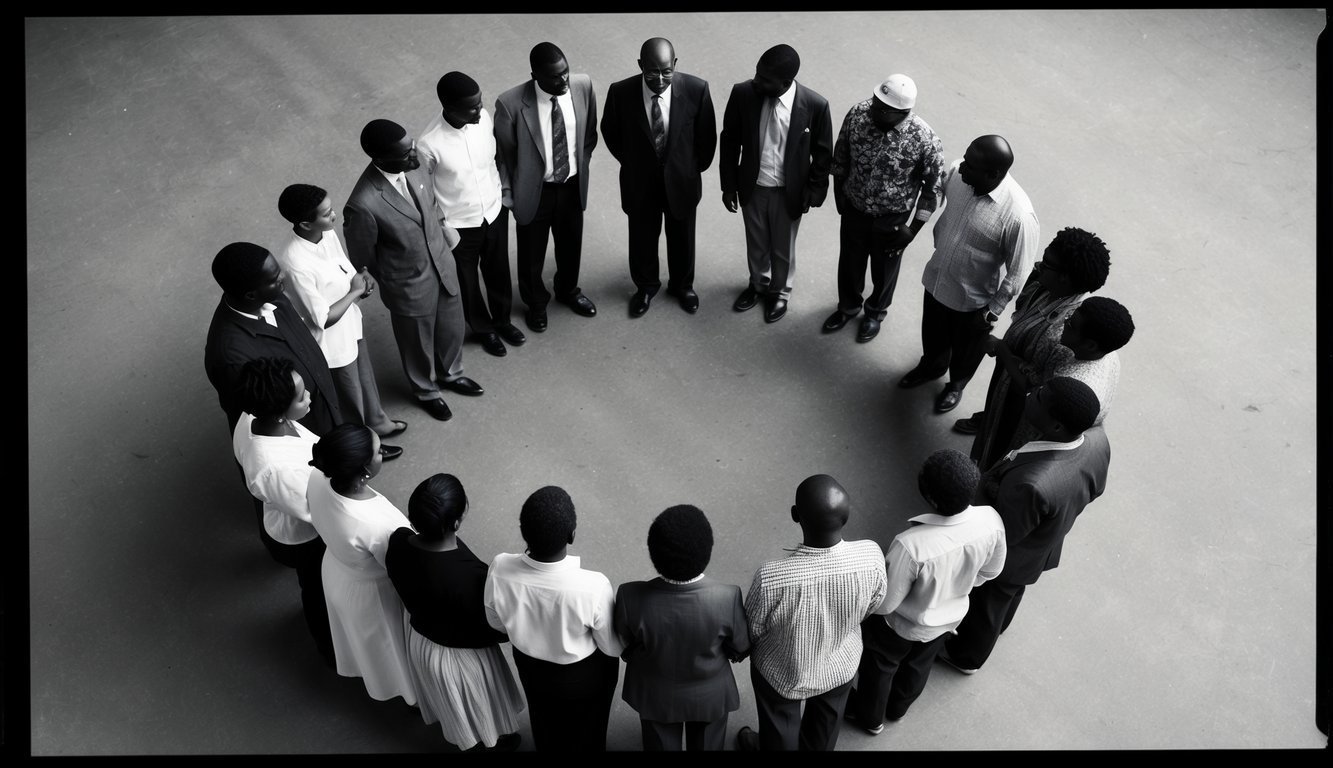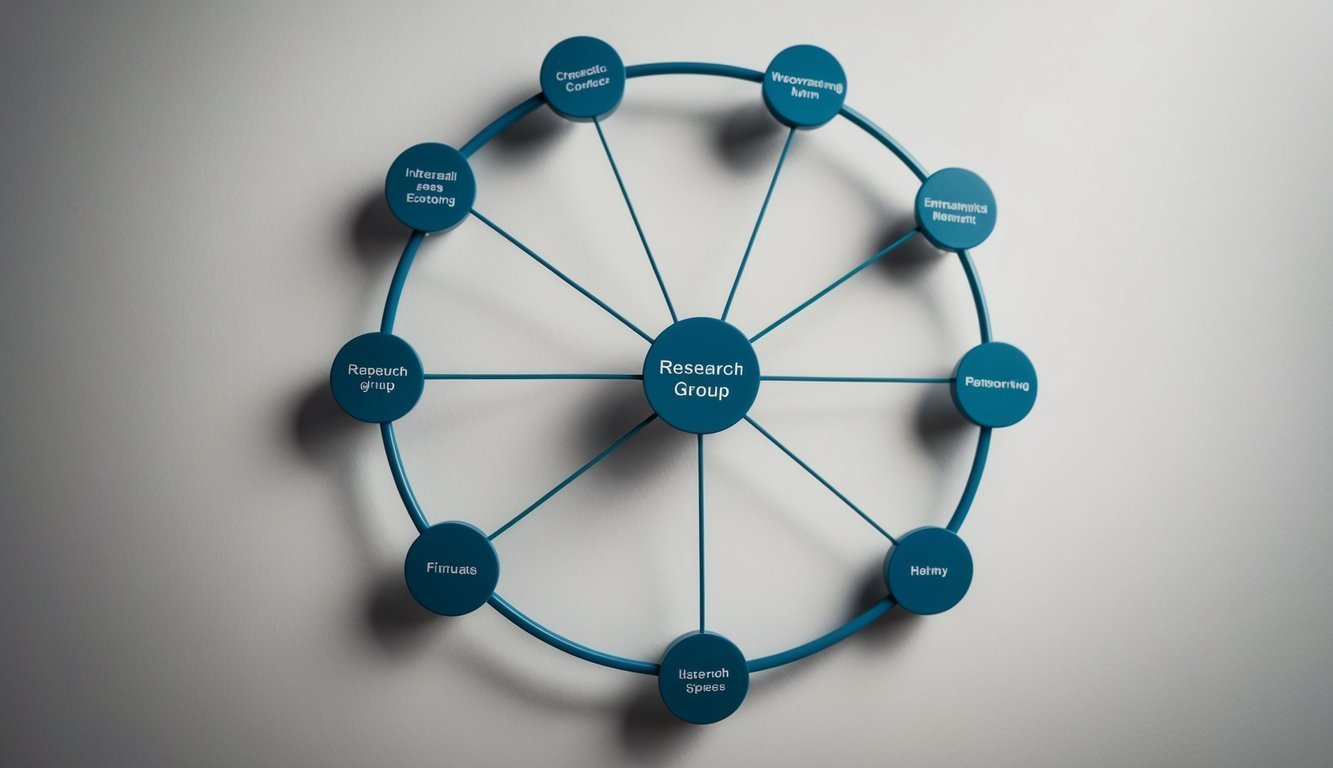Fundamentals of Group Dynamics
Group dynamics embody the interactions, behaviors, and processes that happen inside and between teams.
These dynamics form how teams kind, evolve, and performance over time.
Defining Group Dynamics
Group dynamics discuss with the forces and processes at play inside a bunch setting.
These embody communication patterns, decision-making processes, and energy buildings.
Teams are extra than simply collections of people.
They kind distinctive entities with their very own traits and behaviors.
The examine of group dynamics examines how individuals work together in group settings and the way these interactions affect group outcomes.
This discipline explores ideas equivalent to group cohesion, social affect, and management.
Researchers on this space examine how teams kind, develop norms, and resolve conflicts.
Additionally they examine the influence of group measurement, composition, and construction on efficiency and member satisfaction.
Historic Views on Group Analysis
The formal examine of group dynamics emerged within the mid-Twentieth century. Kurt Lewin, typically thought of the founding father of social psychology, performed a pivotal function in establishing this discipline.
Lewin’s work within the Nineteen Thirties and Nineteen Forties laid the muse for understanding group habits and processes.
He emphasised the significance of learning teams of their pure environments.
World Warfare II considerably superior group dynamics analysis.
Army psychologists studied staff effectiveness and management in high-stakes conditions.
Submit-war, researchers like Muzafer Sherif and Solomon Asch performed groundbreaking experiments on group affect and conformity.
These research revealed the highly effective influence of group stress on particular person habits.
Within the Nineteen Sixties and Nineteen Seventies, focus shifted to organizational psychology.
Researchers examined how group dynamics affected office productiveness and satisfaction.
The Levels of Group Formation
Bruce Tuckman’s mannequin of group growth, proposed in 1965, stays influential.
It outlines 4 distinct phases: forming, storming, norming, and performing.
Forming: Group members get acquainted and set up preliminary roles.
Storming: Conflicts come up as members assert their individuality.
Norming: The group develops cohesion and shared expectations.
Performing: Members work successfully collectively towards frequent targets.
Some researchers later added a fifth stage, “adjourning,” to explain group dissolution.
This mannequin offers a framework for understanding how teams evolve over time.
It helps predict challenges teams might face at completely different phases of growth.
Latest analysis has expanded on Tuckman’s mannequin, exploring elements that affect development by these phases.
Group composition, management model, and exterior pressures can all influence a bunch’s growth trajectory.
Mechanisms of Interplay and Affect in Teams
Teams operate by advanced dynamics that form member behaviors and outcomes.
These mechanisms contain communication patterns, management roles, and psychological processes that affect particular person and collective actions.
Patterns of Communication and Collaboration
Group interplay entails the alternate of data and concepts amongst members.
Communication networks can take varied varieties, equivalent to centralized, decentralized, or all-channel buildings.
Centralized networks typically result in quicker problem-solving however might restrict participation.
Decentralized networks promote extra equal involvement however may be slower in decision-making.
Collaboration kinds additionally influence group dynamics.
Some teams prioritize consensus-building, whereas others depend on majority rule or skilled opinions.
The chosen strategy impacts member satisfaction and final result high quality.
Efficient teams typically set up norms for respectful communication and lively listening.
These practices foster a supportive surroundings the place numerous views may be shared and regarded.
Management and Determination-Making
Management performs a vital function in group dynamics.
Totally different management kinds can considerably influence group processes and outcomes:
Autocratic: Chief makes selections unilaterally
Democratic: Chief encourages group participation
Laissez-faire: Chief offers minimal steering
The selection of management model typically is determined by the group’s duties, composition, and targets.
Efficient leaders adapt their strategy to the state of affairs and group wants.
Determination-making processes in teams can differ broadly.
Widespread strategies embody:
Consensus
Majority vote
Professional judgment
Nominal group approach
Every methodology has its strengths and weaknesses, influencing the standard of choices and member satisfaction.
Conformity, Persuasion, and Groupthink
Social affect inside teams can result in conformity, the place people align their behaviors or beliefs with the bulk.
This could happen by normative affect (want to be accepted) or informational affect (perception that others have right info).
Persuasion strategies, equivalent to reciprocity, social proof, and authority, can sway group opinions.
Expert communicators typically make use of these strategies to affect group selections.
Groupthink is a phenomenon the place the will for concord results in dysfunctional decision-making.
Indicators of groupthink embody:
Phantasm of invulnerability
Rationalization of warnings
Stereotyping of out-groups
Self-censorship
To fight groupthink, teams can encourage dissenting opinions, invite outdoors specialists, and use structured decision-making processes.
These methods promote vital considering and enhance the standard of group outcomes.
Behavioral Facets and Group Cohesion

Group cohesion and behavioral dynamics play essential roles in staff efficiency and effectiveness.
Belief, shared norms, and battle decision expertise contribute considerably to a bunch’s capacity to work collectively harmoniously and obtain frequent targets.
Constructing Belief and Cohesion Inside Groups
Belief is a basic facet of group cohesion.
Groups with excessive ranges of belief have a tendency to speak extra overtly, take calculated dangers, and assist each other’s efforts.
To foster belief, staff members ought to:
Display reliability by constantly assembly commitments
Observe lively listening and empathy
Share info transparently
Acknowledge and study from errors
Variety inside groups can improve creativity and problem-solving.
Nonetheless, it might initially pose challenges to cohesion.
Leaders ought to promote inclusive practices and spotlight the worth of numerous views to strengthen group bonds.
The Influence of Group Norms and Values
Group norms and values form particular person behaviors inside a staff.
These shared expectations and beliefs affect:
Communication kinds
Determination-making processes
Work ethic and productiveness requirements
Battle administration approaches
Clearly outlined and collectively agreed-upon norms assist create a way of unity and function.
Groups ought to periodically evaluation and replace their norms to make sure they align with organizational targets and evolving staff dynamics.
Battle Decision and Group Effectiveness
Battle is inevitable in group settings, however the way it’s managed determines its influence on staff cohesion and effectiveness.
Efficient battle decision methods embody:
Addressing points promptly and instantly
Specializing in pursuits moderately than positions
Encouraging open dialogue and lively listening
In search of win-win options
Groups that deal with conflicts constructively typically expertise elevated cohesion and improved problem-solving capabilities.
By viewing disagreements as alternatives for progress and studying, teams can strengthen their bonds and improve total efficiency.
Cultural and Structural Dimensions of Teams

Group dynamics are profoundly influenced by cultural elements and structural parts.
These dimensions form how members work together, make selections, and obtain collective targets.
Variety, Fairness, and Inclusion in Teams
Cultural variety considerably impacts group dynamics.
Numerous teams convey collectively people with diverse views, experiences, and values.
This variety can improve creativity and problem-solving however may result in misunderstandings or conflicts.
Fairness in teams entails making certain honest remedy and entry to alternatives for all members.
It requires addressing energy imbalances and systemic limitations which will drawback sure people or subgroups.
Inclusion practices foster a way of belonging and respect for all group members.
Inclusive teams actively hunt down and worth numerous viewpoints, creating an surroundings the place everybody feels empowered to contribute.
Psychological analysis reveals that numerous and inclusive teams typically outperform homogeneous ones in advanced duties.
Nonetheless, reaching true inclusion requires ongoing effort and consciousness from group leaders and members.
Formal and Casual Constructions
Formal buildings in teams embody formally outlined roles, hierarchies, and procedures.
These present readability and group however can generally hinder flexibility and spontaneity.
Casual buildings emerge naturally by social interactions and relationships throughout the group.
These unofficial networks typically exert important affect on group dynamics and decision-making processes.
Efficient teams stability formal and casual buildings.
Whereas formal buildings guarantee accountability and clear communication channels, casual buildings facilitate trust-building and knowledge sharing.
Organizational habits research spotlight the significance of aligning formal buildings with group targets and cultural norms.
Teams that efficiently combine each dimensions are usually extra cohesive and productive.
Development in Group Dynamics Analysis

Group dynamics analysis has made important strides in understanding collective behaviors and outcomes.
Latest developments concentrate on assessing group efficacy and exploring new theoretical instructions.
Assessing Collective Efficacy and Outcomes
Researchers have developed subtle strategies to measure collective efficacy and group efficiency.
These strategies analyze communication patterns and social relationships inside teams.
New evaluation instruments look at how self-regulation impacts group outcomes.
They consider how members coordinate efforts and adapt to challenges.
Research now incorporate real-time knowledge assortment to seize dynamic group processes.
This strategy offers a extra nuanced understanding of how collective efficacy evolves over time.
Researchers are additionally exploring the hyperlink between group socialization and efficiency.
They look at how new members combine and affect established group dynamics.
Future Instructions in Group Dynamics Idea
Rising theories in group dynamics concentrate on the interaction between particular person and collective behaviors.
These frameworks goal to elucidate how private traits form group interactions.
Progressive conceptual approaches are integrating insights from neuroscience and cognitive psychology.
They discover how cognitive processes affect group decision-making and problem-solving.
Researchers are growing fashions to foretell group outcomes primarily based on preliminary circumstances and member traits.
These predictive instruments have sensible functions in staff formation and administration.
Future research will probably look at the influence of digital and hybrid work environments on group dynamics.
This analysis will inform greatest practices for distant collaboration and staff constructing.








